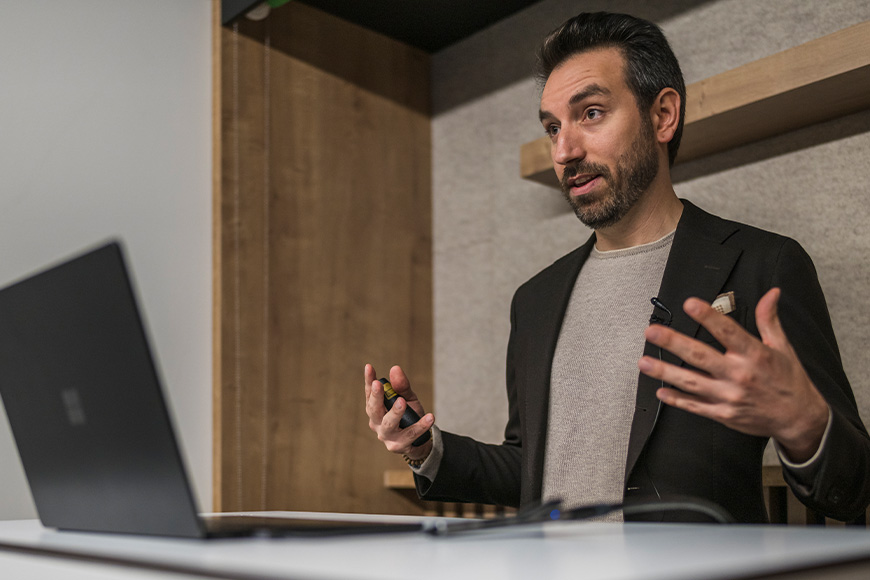Extreme opening represents more than a daring move; it stands as a sophisticated strategy rooted in psychology and the dynamics of high-stakes discussions. When you step into a negotiation—whether for a crucial business deal or a complex contract—your first offer carries tremendous weight. It sets the tone, acts as a reference point, and directs the entire conversation. This technique demands a keen read of the situation, a clear grasp of your counterpart’s mindset, and an appreciation for the potential risks involved. When you execute an extreme opening properly, you seize control of the narrative and shift the entire discussion in your favor.
Why Extreme Opening Works: The Anchor Point Effect
An extreme opening exploits the powerful bias known as anchoring. The very first number or statement you deliver establishes a reference that influences all subsequent offers and counteroffers.
When you declare a bold figure right off the bat, you plant an anchor that draws all further negotiations toward that level. Consider a scenario where a product carries an inherent value of $15,000. Instead of leading with that figure, you start with an offer of $20,000. The other party, even if they view $20,000 as excessive, will typically negotiate downward—often landing near your original target. This initial figure acts as a psychological benchmark that frames the entire conversation.
Your opening offer does not simply vanish after the first exchange; it continues to guide your counterpart’s expectations. When you set a high anchor, you establish a realm within which every concession occurs, and you maintain room to yield strategically while keeping the final outcome close to your desired figure. The technique relies on the brain’s natural tendency to cling to the first piece of information it receives, a process that governs subsequent decisions.
The Psychology of Anchoring in Negotiation
Anchoring exerts its influence on the human mind in a profound way. Pioneering behavioral economists Amos Tversky and Daniel Kahneman demonstrated that even unrelated numbers could sway people’s judgments. In negotiations, the first offer you make defines the starting point.
If your counterpart does not challenge it vigorously, that number becomes the lens through which all future offers are viewed. Research shows that this bias often persists even when both parties possess detailed market data. The initial offer, however bold or extreme, tends to set a benchmark that colors every subsequent decision.
For example, consider a negotiation for a long-term supply agreement. Suppose the market rate for a set of components hovers around €500,000 per year. When you propose a figure of €450,000, you shift the vendor’s idea of an acceptable range. Even if they eventually counter with a higher number, your early offer has already nudged the conversation toward your target. In this way, anchoring serves as a silent partner throughout the negotiation process, continuously influencing decisions in your favor.
When to Use Extreme Opening: Timing and Information Advantage
Not every negotiation invites the use of an extreme opening. Its effectiveness depends heavily on the context and on which side holds an informational advantage. When you possess more detailed or accurate data than your counterpart, you can afford to push the envelope with a bold opening. For instance, a seller in a real estate transaction who knows the true market value better than the buyer might set a high asking price to leverage that insight.
Conversely, when both parties share comparable knowledge—such as in a partnership negotiation—an extreme opening might backfire. A counterpart who senses that both sides are on equal footing could perceive a high opening as merely a tactical ploy, undermining trust and discouraging further collaboration. Before you decide to use this tactic, ask yourself:
- Do I command more detailed information than the other side?
- Will they regard a high opening as a challenge or as an invitation for discussion?
- Is the focus on a transactional exchange, or do I seek a long-term relationship?
Answering these questions candidly helps determine whether an extreme opening will secure extra value or risk alienating your negotiation partner. The answers can also be given by a third party that can handle negotiation consulting for you.
Extreme Opening in Competitive Versus Collaborative Negotiations
The nature of your negotiation plays a crucial role in how you deploy an extreme opening. In competitive, or distributive, negotiations—where the primary goal is to maximize personal gain—an extreme opening works as a clear signal of intent. In a one-off deal, where the relationship does not weigh heavily on future opportunities, setting a high anchor can push your counterpart into negotiating within a narrower range that benefits you. For example, if your company bids for a multi-year service contract typically valued at €1 million per year, an opening offer of €1.3 million may force the client to adjust their expectations downward during counteroffers, ultimately arriving at a figure closer to your target.
In contrast, collaborative, or integrative, negotiations require a more measured approach. In these settings, your goal shifts from claiming maximum value to creating shared benefits. Here, an extreme opening must signal ambition while maintaining an openness to dialogue. An overly aggressive offer might shut down conversation and damage the budding relationship. Instead, you can still set a high anchor but pair it with clear signals that you value mutual benefit. This balanced approach shows that you remain open to negotiation, even as you establish the boundaries within which you operate.
Managing the Fallout of Extreme Opening
The power of an extreme opening carries risks. An overly aggressive start might lead your counterpart to feel cornered or manipulated, which can sour the relationship and jeopardize future opportunities. To counteract these risks, you need a strategy to manage any negative fallout.
First, you communicate openly. Clarify that your initial offer serves as a strategic starting point rather than an unyielding demand. Explaining your rationale can help soften the impact and build trust. Next, follow through with consistent actions throughout the discussion. Your continued reliability reassures the other party that your bold opening does not mask a lack of commitment. Finally, show appreciation for the other side’s efforts. A simple acknowledgment of their time and input can help maintain a respectful atmosphere, even when the negotiation begins on a high note.
By actively addressing the potential downsides, you can harness the benefits of an extreme opening while keeping the conversation constructive and forward-moving.
Responding to Extreme Openings
What if the other party starts with an extreme offer? The first step is to recognize their attempt to set an anchor. Instead of rushing to a middle figure, you challenge that initial offer directly. State firmly that the opening falls outside acceptable parameters.
Then, support your counteroffer with hard data. Bring forth market trends, comparable figures, or detailed cost analyses that justify your perspective. Sometimes, launching your own bold counteroffer creates a new anchor point. A well-calculated number from your side resets the conversation, pushing the negotiation back into a range more favorable to you.
This approach demonstrates that you are neither intimidated by extremes nor willing to settle quickly. You assert your stance while signaling readiness for genuine negotiation—a balance that can neutralize even the boldest opening.
Real-Life Example: Dwayne Johnson’s Hollywood Negotiation Tactic
One of the most vivid illustrations of extreme opening comes from Hollywood. In 2018, Dwayne Johnson negotiated with Universal Pictures over the film “Red Notice.” He entered the discussion with an audacious demand—$22 million upfront combined with substantial creative control over the project.
His opening offer sent a clear signal: his value exceeded conventional expectations. Universal Pictures, recognizing Johnson’s immense box-office pull and unique influence, responded by adjusting their expectations. The final deal secured Johnson one of the highest paychecks in Hollywood while granting him a degree of creative influence that few actors enjoy. Johnson’s bold maneuver not only redefined the negotiation but also reinforced his status as a market mover.
This example reveals that when an extreme opening aligns with genuine market strength, it transforms negotiations. The tactic sets a high benchmark that compels the other side to rethink their position, leading to an outcome that reflects both confidence and strategic insight.
The Strategic Power of Extreme Opening in Negotiation
Extreme opening wields the power to reshape the entire negotiation landscape. It allows you to claim a larger share of the value while preserving room for concessions. The key lies in balancing audacity with a deep appreciation for the broader dynamics at play—specifically, trust and long-term relationship management.
Every negotiation presents unique challenges. Success depends on your ability to read the situation, leverage your informational edge, and decide whether a bold opening will create extra value or risk derailing the process. With careful planning, confident delivery, and a clear vision of your goals, you can turn an extreme opening into a cornerstone of your negotiation strategy.
Remember that negotiation transcends a mere exchange of numbers. It involves a delicate dance where every statement, every figure, and every gesture plays a role in building a lasting outcome. Use an extreme opening to set the tone, assert your worth, and pave the way for a deal that not only meets your needs but also lays the foundation for future opportunities.
The Strategic Power of Extreme Opening in Negotiation
Extreme opening stands as a potent tool in the negotiator’s arsenal. It reshapes discussions, redefines value, and compels both sides to view the conversation through a new lens. When you use this tactic, you create an anchor that influences every subsequent decision, steering the negotiation toward an outcome that reflects your true value.
The key lies in knowing when to deploy such a bold move, in balancing competitive ambition with collaborative sensitivity, and in managing any fallout with transparency and consistency. Whether you lead with a high number to claim maximum value or counter an extreme offer with a data-driven rebuttal, your ability to set and reset the negotiation’s frame can make all the difference.
Each negotiation becomes a strategic conversation where every word, every figure, and every action matters. Embrace extreme opening with confidence, but temper it with a deep respect for the long-term relationships you build along the way. With the right balance of daring and finesse, you can turn even the most aggressive opening into a pathway toward lasting success.

 Martin Pilch
Martin Pilch 
